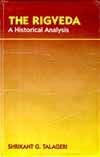|
 Page 1
Page 1
The evidence of the oldest literary records of the Indo-European family of languages, the Rigveda and the Avesta, as we have seen, clearly and unambiguously depicts a movement of the “Indo-Iranians” from the east to the west and northwest.
And Central Asia and Afghanistan, which, according to the standard theory, is the route by which the Indoaryans migrated into India, turns out to be the route by which the Iranians migrated westwards and northwards.
This deals a body-blow to a very vital aspect of the theory which places the original Indo-European homeland to the northwest of Central Asia (ie. in and around South Russia), and it lends strong support to the theory that the Indo-European family of languages originated in India.
If, therefore, the scholars,, by and large, remain strongly resistant to the Indian homeland theory, it is not because the facts of the case rule out this theory, but because a defence of the standard theory has become a dogma with the scholars, and any scholar, particularly an Indian one, who pursues the Indian homeland theory is automatically held suspect as a fundamentalist or a chauvinistic nationalist.
So much so that any theoretical scenario which is loaded against the Indian homeland theory gains respectability; and some scholars go to the extent of deliberately projecting a blatantly false picture of the whole situation, calculated to place the Indian geographical area as far out of the geographical ambits of early Indo-European history as possible.
An example of this is the clearly fraudulent case presented by a Western scholar, Victor H. Mair, in a compilation, edited by himself, of the papers presented at the International Conference on the Bronze Age and Iron Age Peoples that was held at the University of Pennsylvania Museum of Anthropology and Archaeology (April 19-21, 1996).
Mair prefaces his presentation with a sharp diatribe against a wide range of what he calls “extremists, chauvinists, and other types of deranged - and possibly dangerous - persons (eg. those who locate the Indo-European homeland in such highly improbable, if not utterly impossible, places as the Arctic, along the Indus Valley, in the Tarim Basin, in China; nationalists and racists of various stripes; kooks and crazies who attribute the rise of Indo-Europeans to extraterritorial visitations, etc.)”.1
Footnotes :
1. BAIAP, p.835.
Author : Shrikant G. Talageri
|